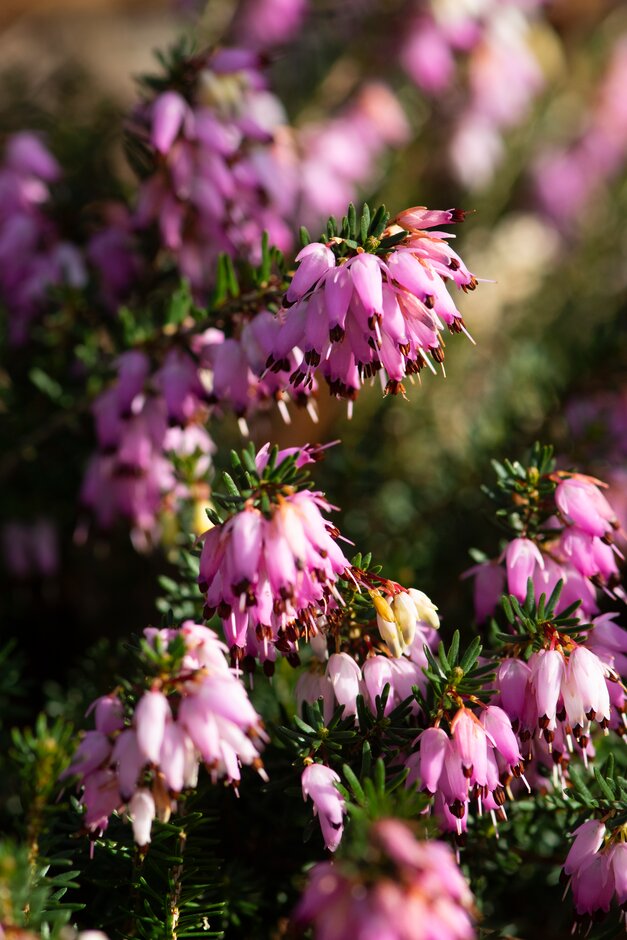Erica carnea 'Mrs Sam Doncaster'
heather 'Mrs Sam Doncaster'
A dwarf shrub 10-15cm high and 45-60cm wide, with leaves which are green tinged with blue-grey, and fragrant pink flowers with chocolate-brown anthers, from midwinter to late spring; most Erica species and cultivars are excellent plants for all types of bees
Size
Ultimate height
0.1–0.5 metresTime to ultimate height
5–10 yearsUltimate spread
0.5–1 metresGrowing conditions
Moisture
Moist but well–drained, Well–drainedpH
Acid, NeutralColour & scent
| Stem | Flower | Foliage | Fruit | |
| Spring | Pink | Green | ||
|---|---|---|---|---|
| Summer | Green | |||
| Autumn | Green | |||
| Winter | Pink | Green |
Position
- Full sun
Aspect
West–facing or East–facing or South–facing
Exposure
Exposed or Sheltered Hardiness
H6Botanical details
- Family
- Ericaceae
- Native to GB / Ireland
- No
- Foliage
- Evergreen
- Habit
- Bushy
- Genus
Erica can be prostrate or erect, evergreen shrubs with fine, needle-like leaves in whorls, and racemes or panicles of small, bell-shaped or tubular flowers
- Name status
Accepted
How to grow
Cultivation
Grow in full sun, in well-drained, preferably acidic, sandy or organic soil; will grow in poor soils, and will tolerate neutral and mildly alkaline soils, and will tolerate some shade; for more advice, see heather cultivation
Propagation
Propagate by semi-ripe cuttings from mid-summer to late summer, or by mound-layering in spring
Suggested planting locations and garden types
- Coastal
- Rock garden
- Flower borders and beds
- Ground cover
- Garden edging
- Banks and slopes
Pruning
Pruning group 1 or pruning group 10 after flowering to maintain compact habit
Pests
Generally pest-free, but rabbits may damage young plants
Diseases
May be susceptible to fungal diseases, including honey fungus (rarely), and Phytophthora root rot, in wet conditions
Get involved
The Royal Horticultural Society is the UK’s leading gardening charity. We aim to enrich everyone’s life through plants, and make the UK a greener and more beautiful place.
